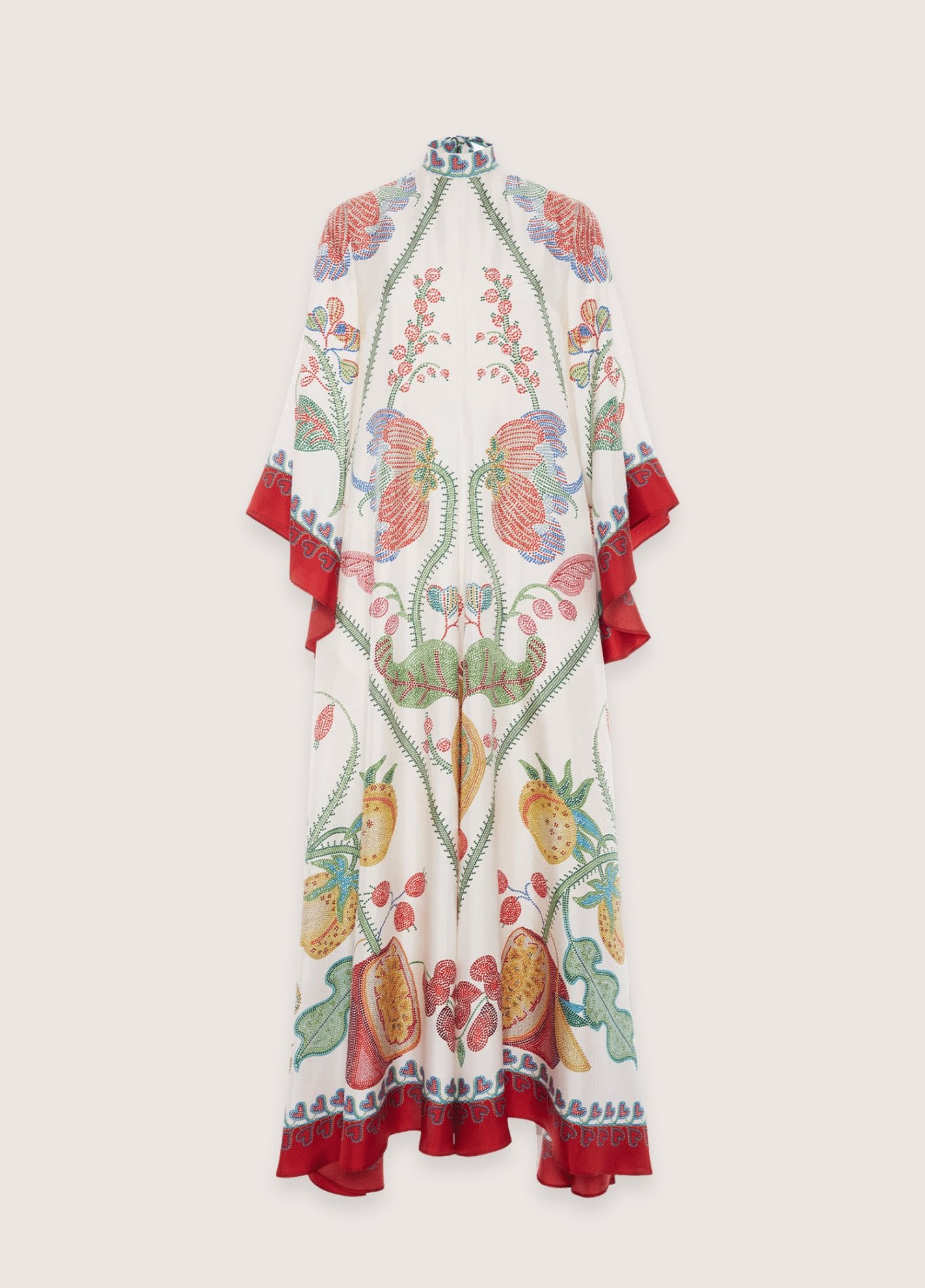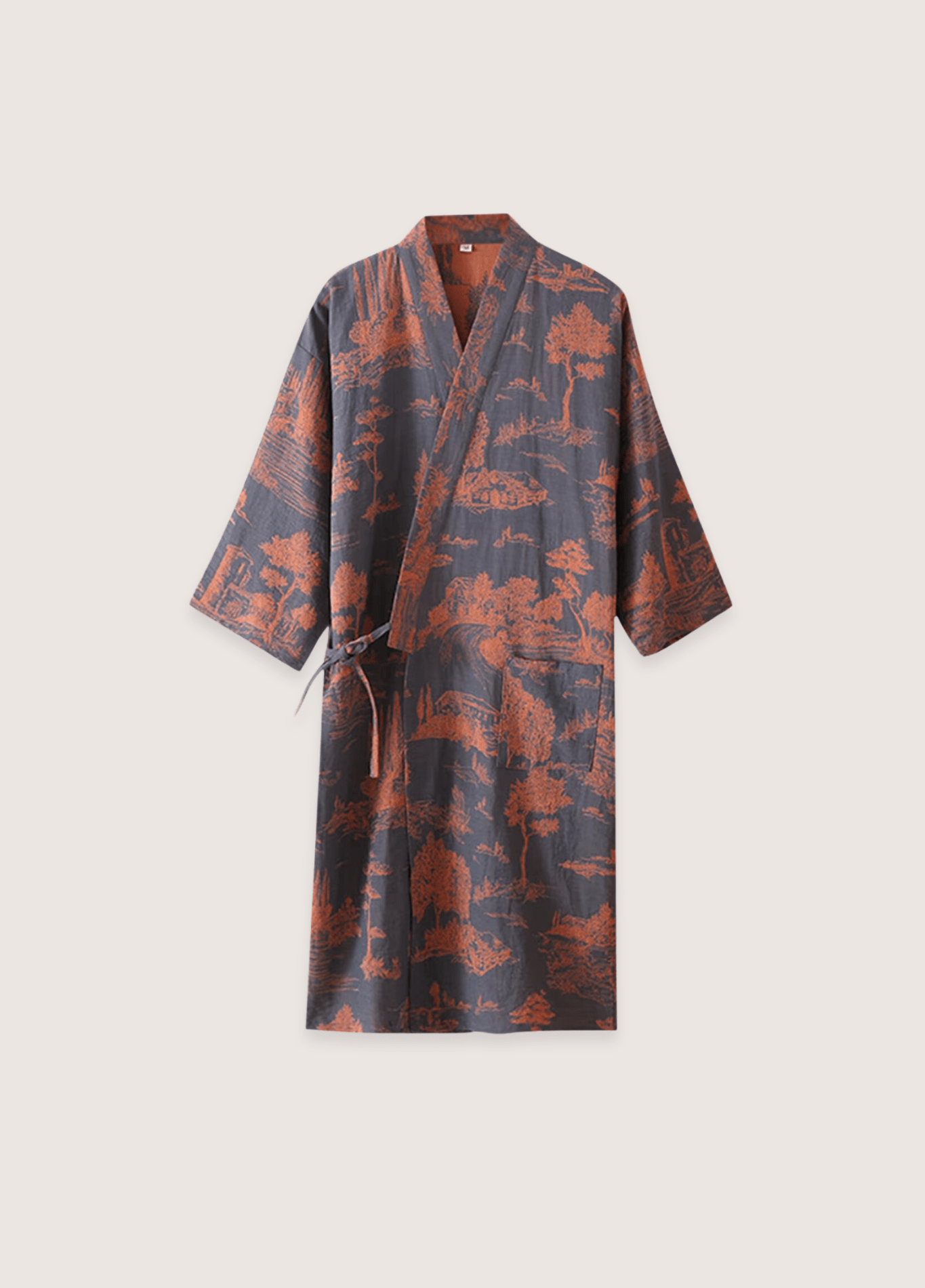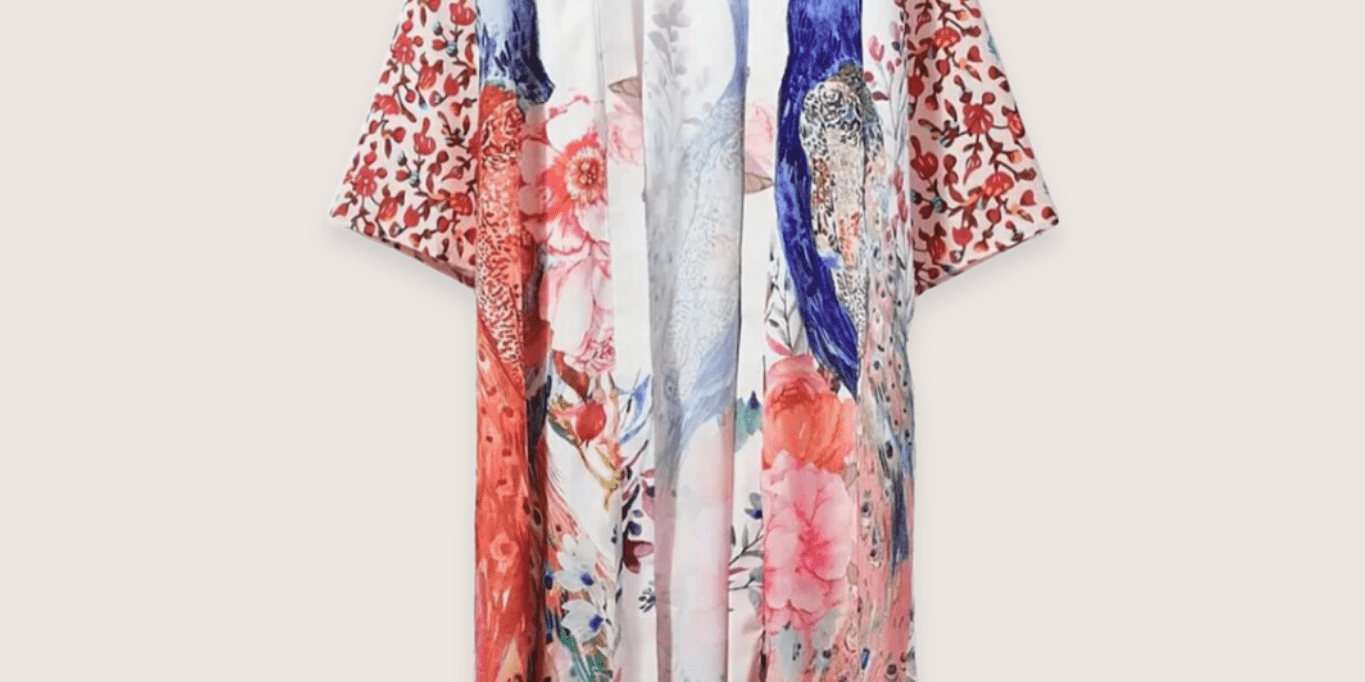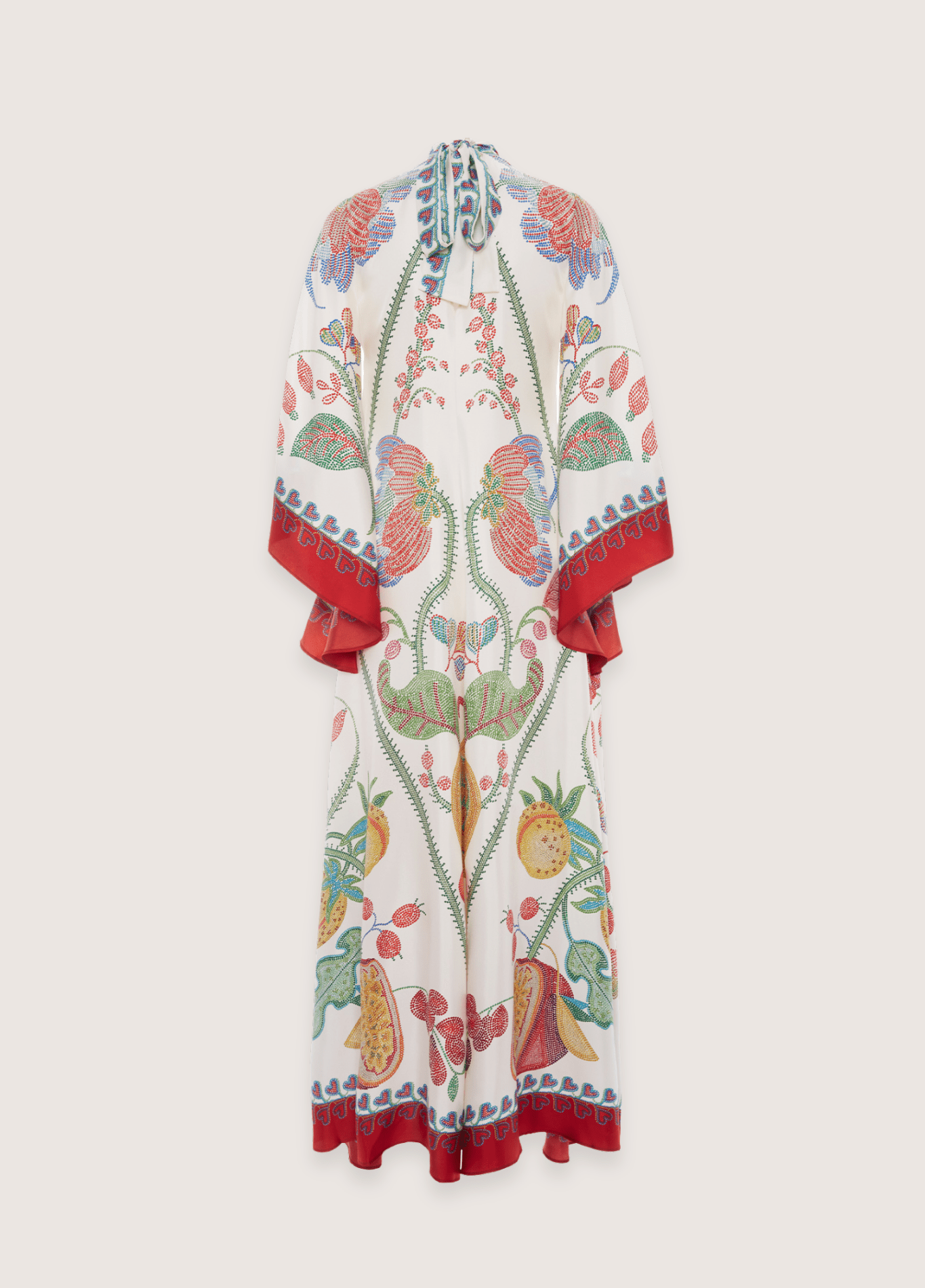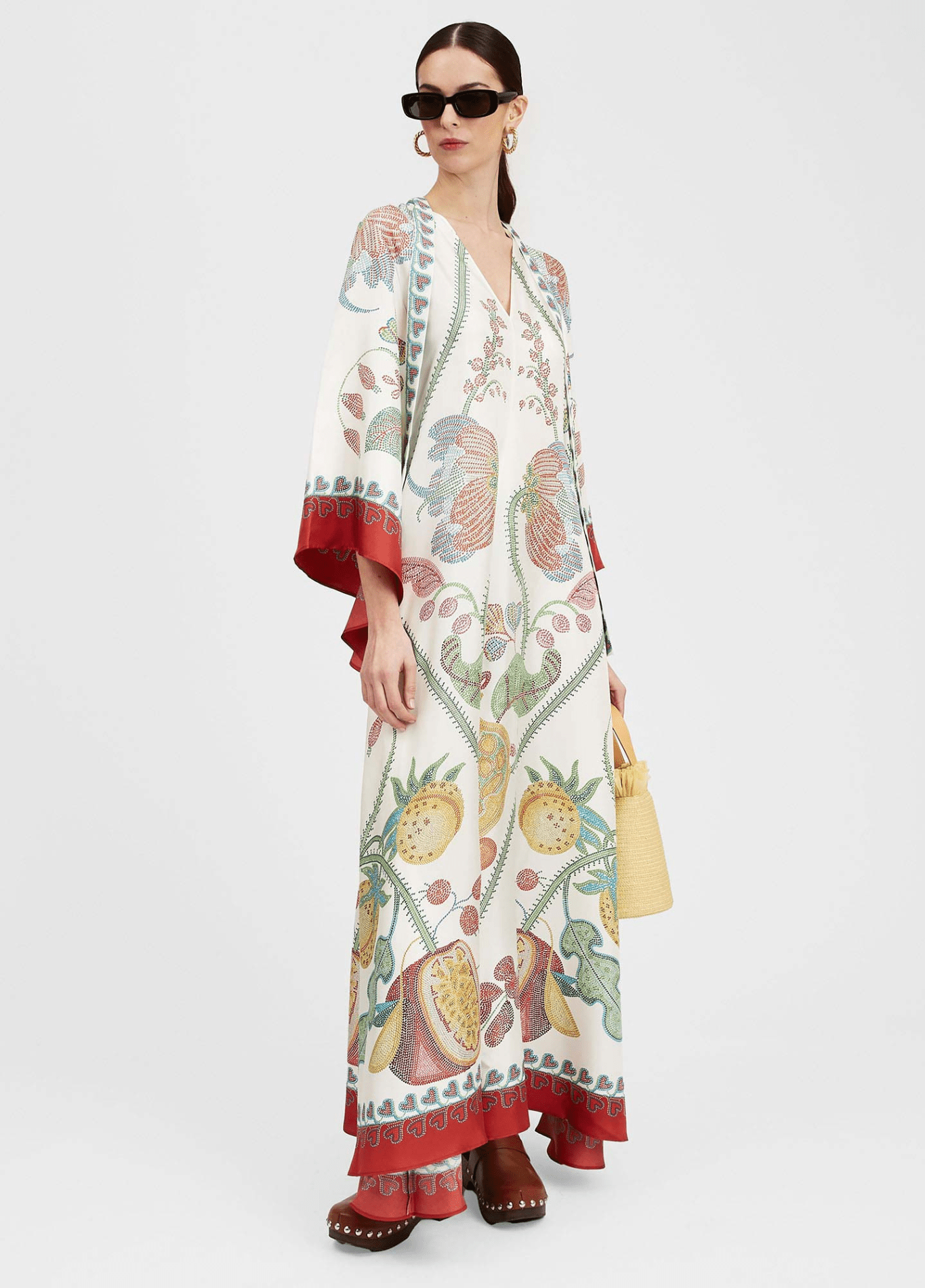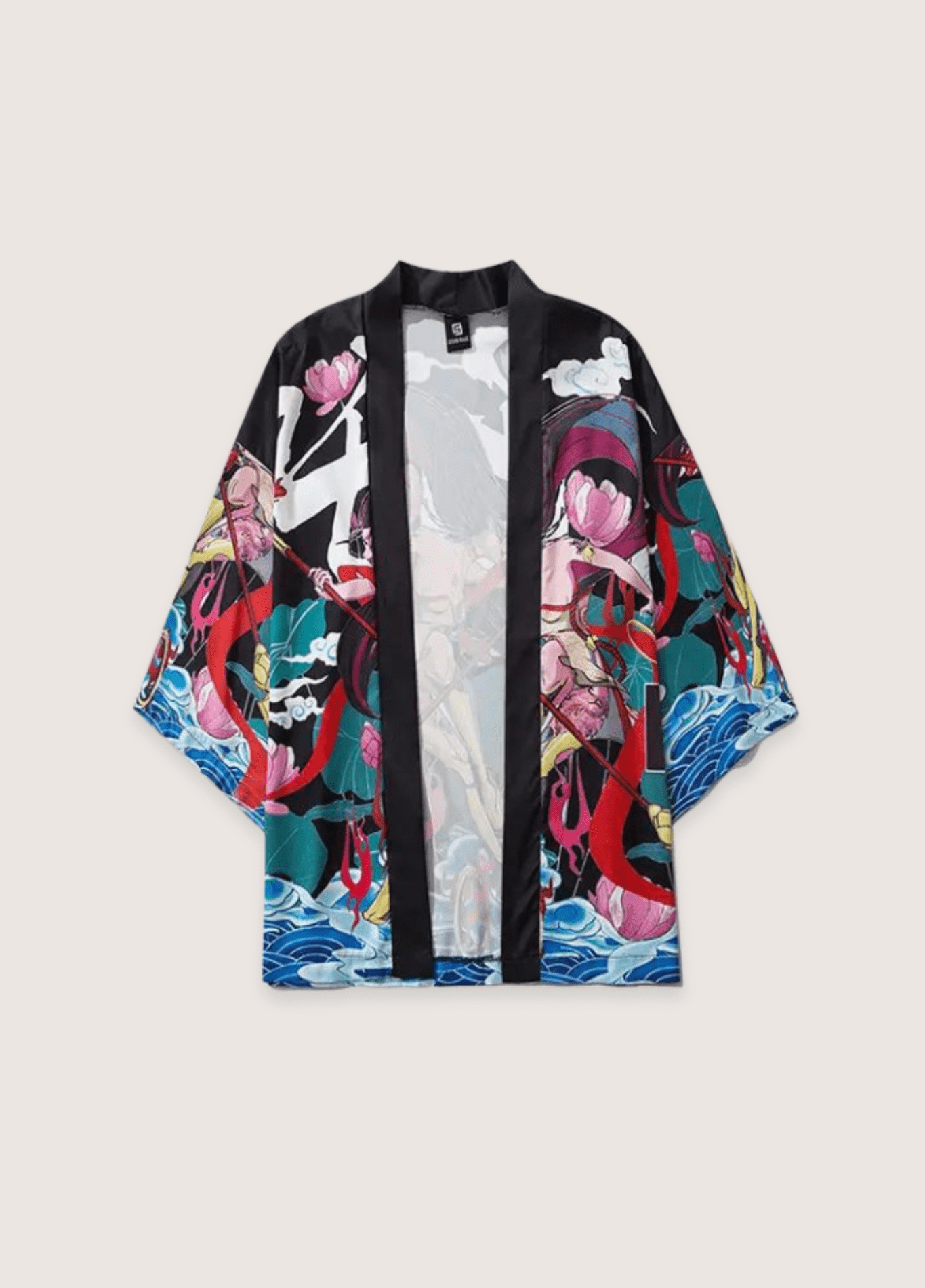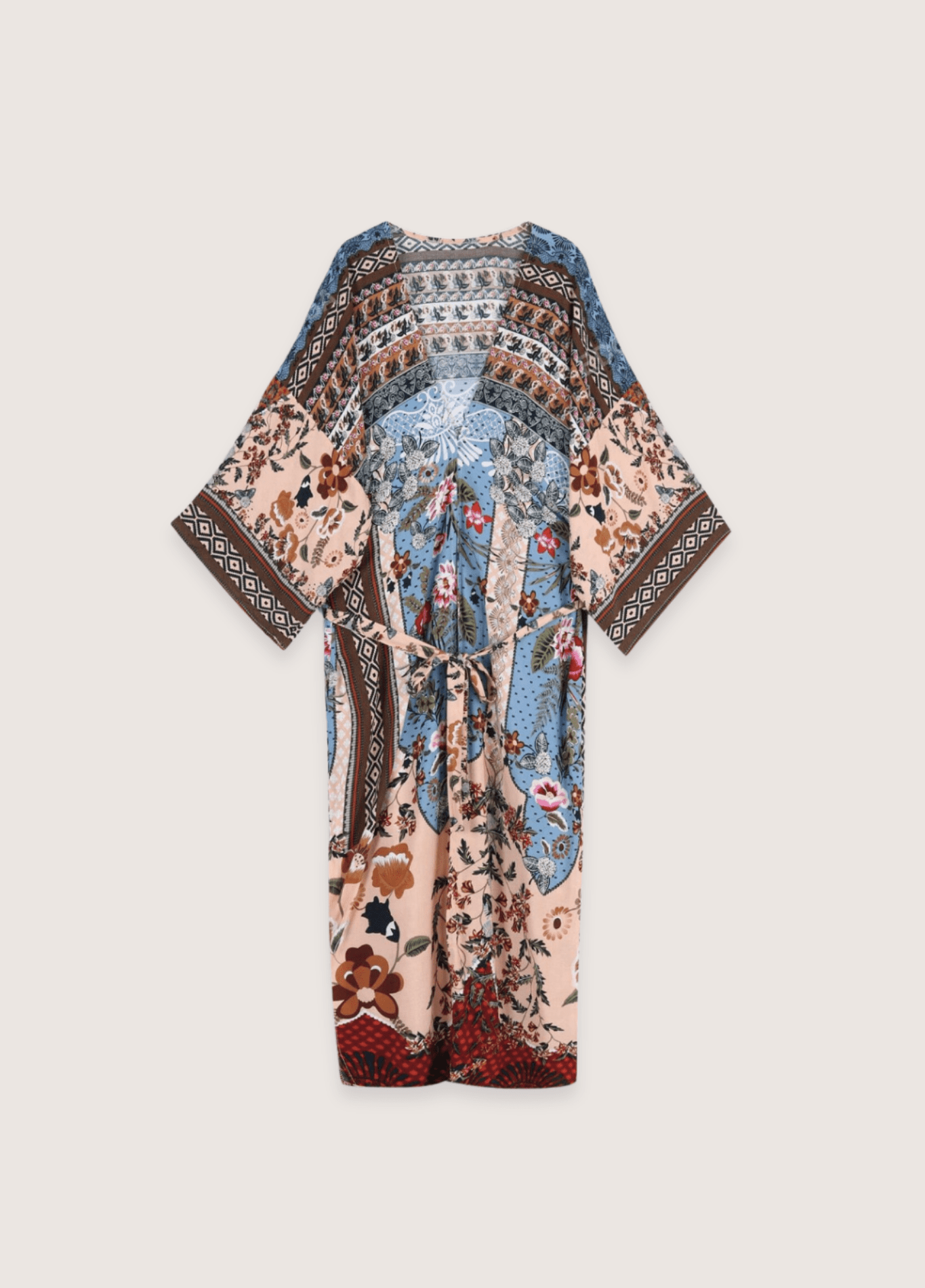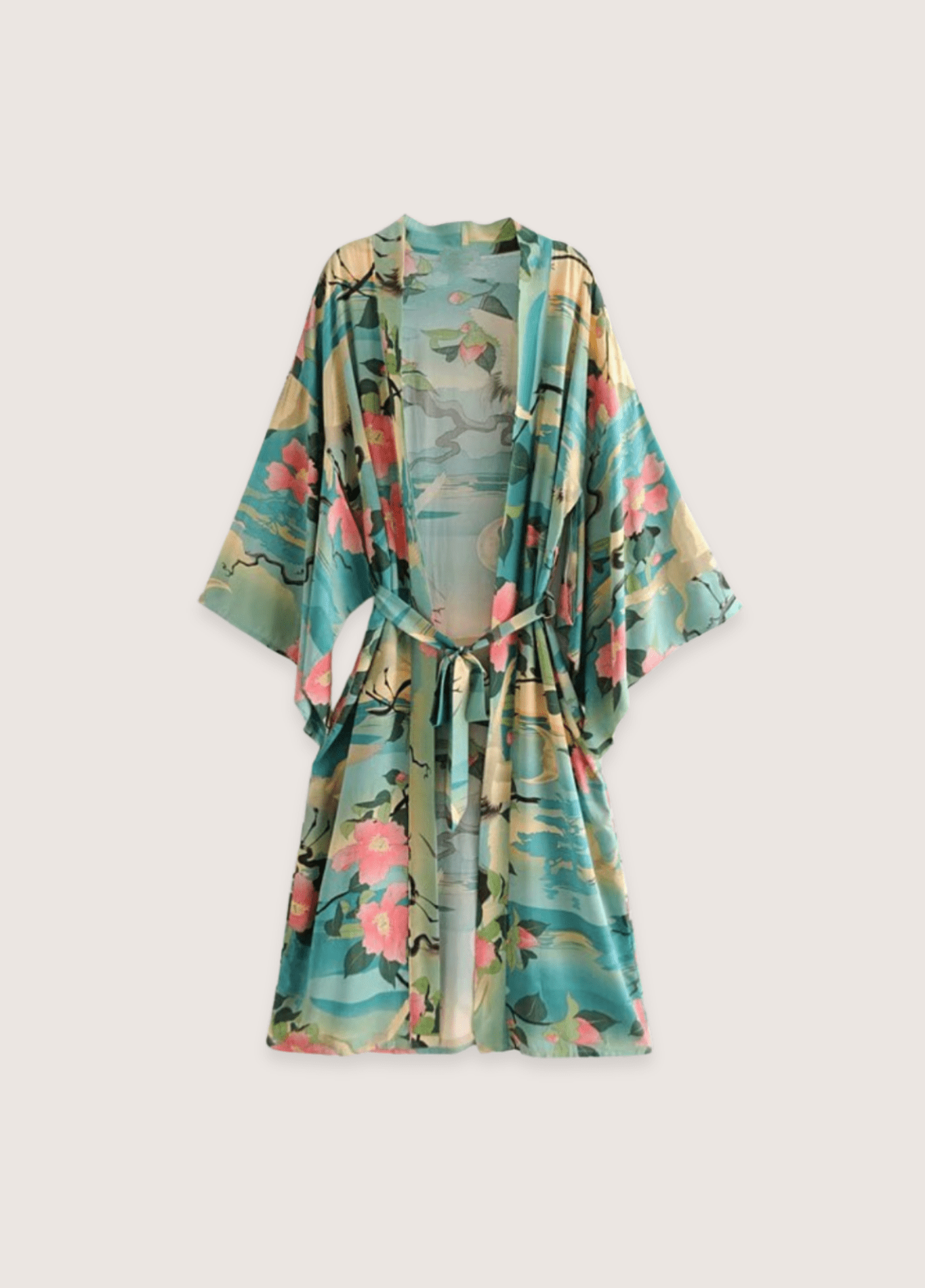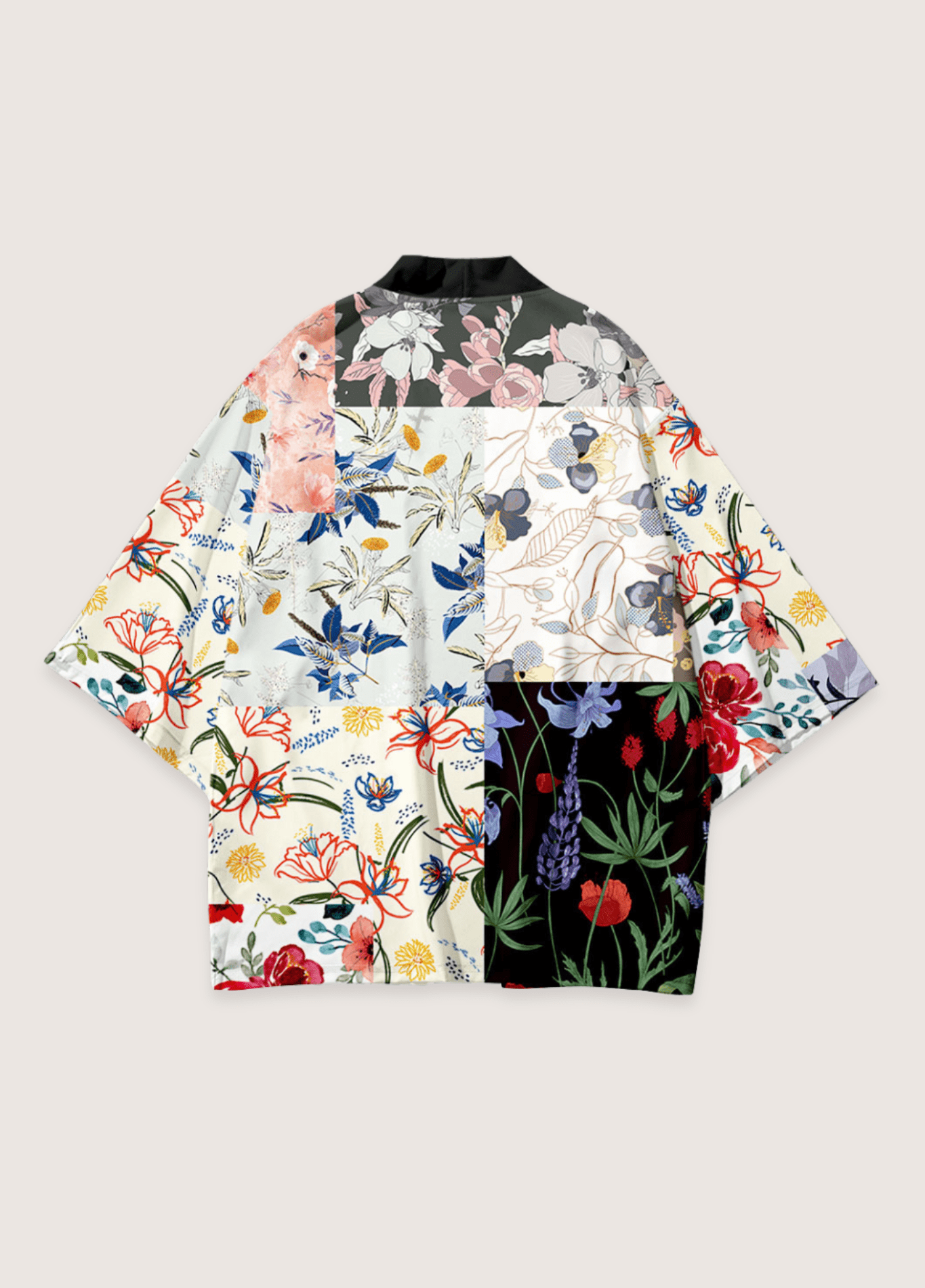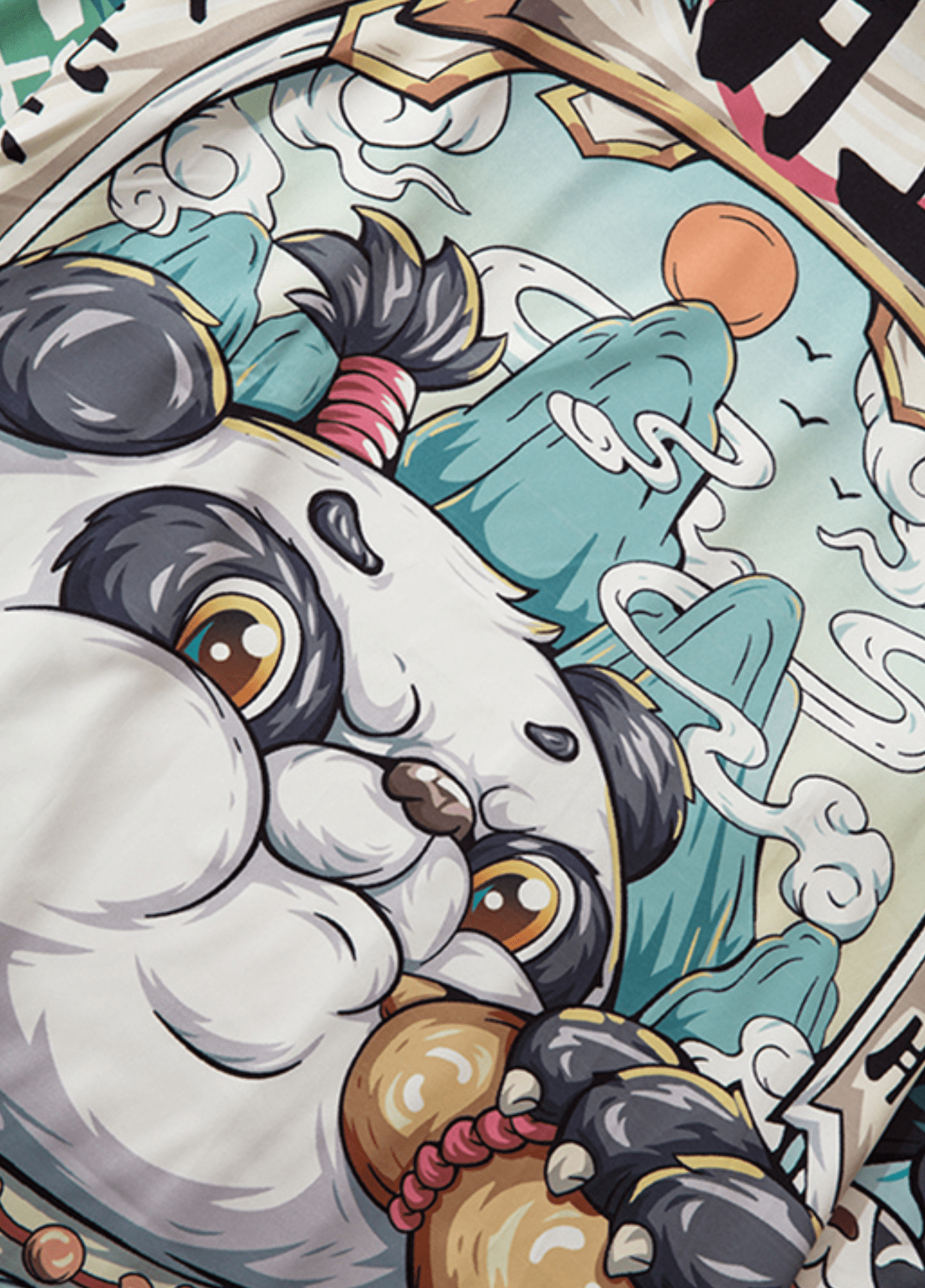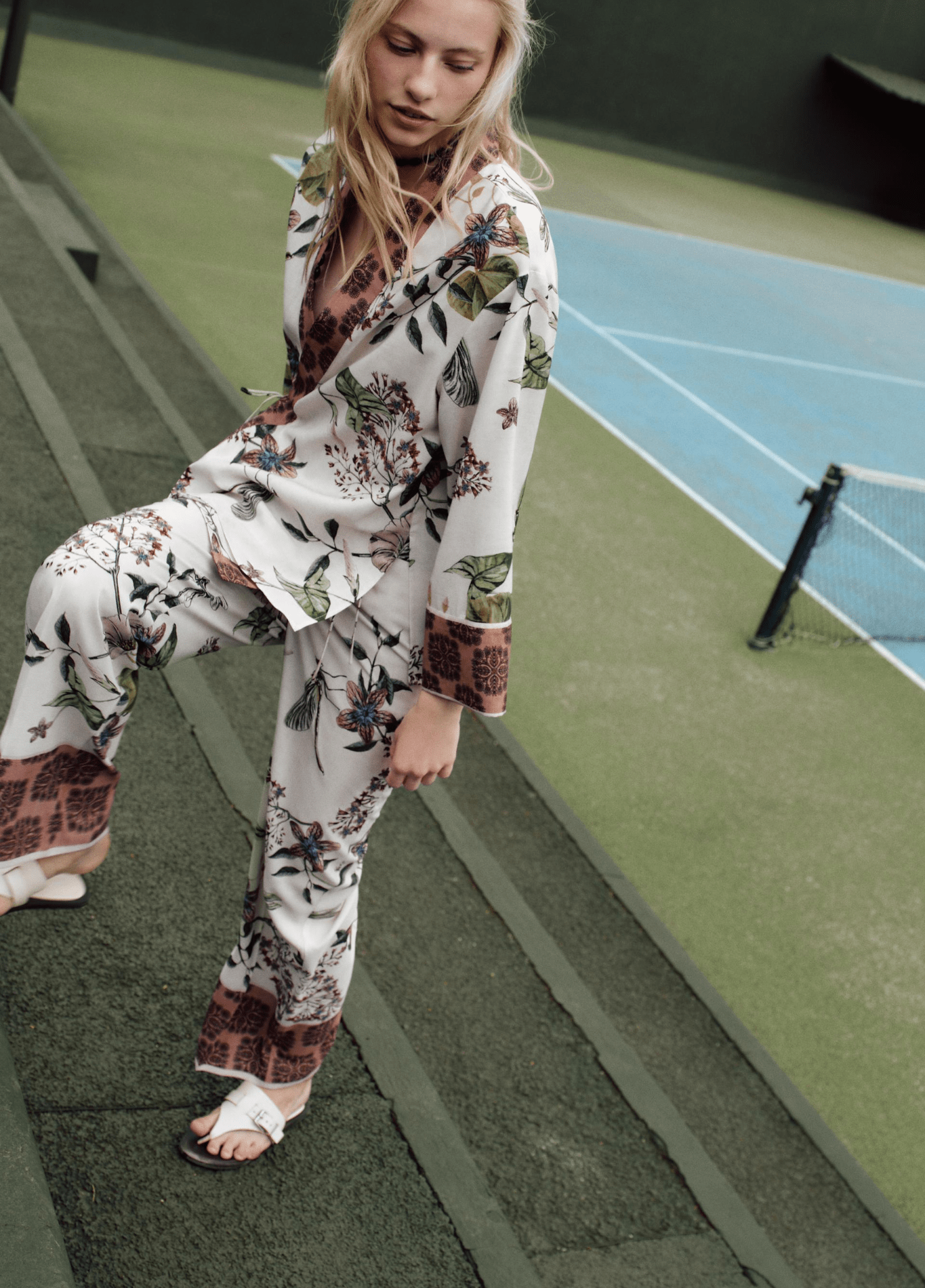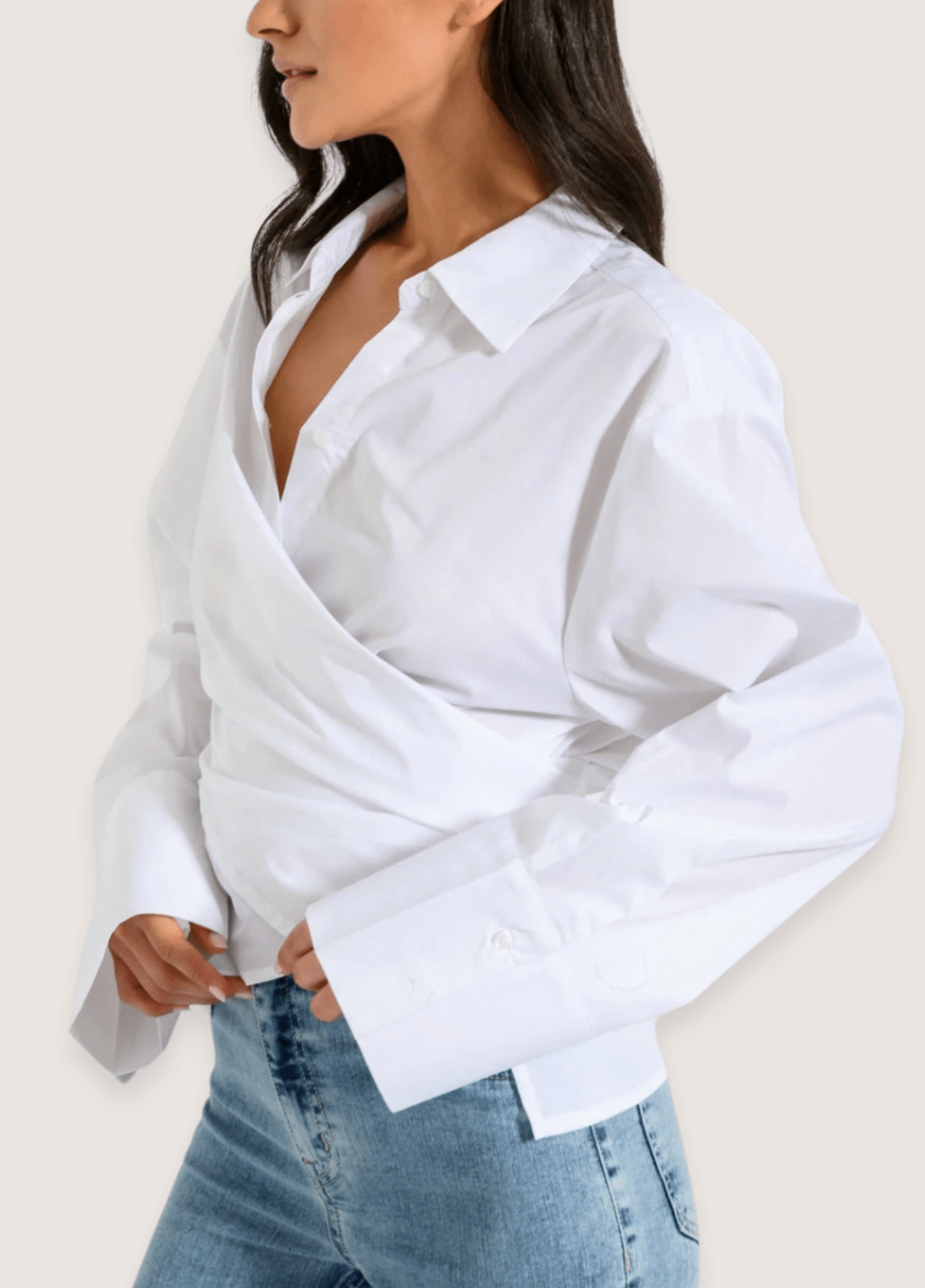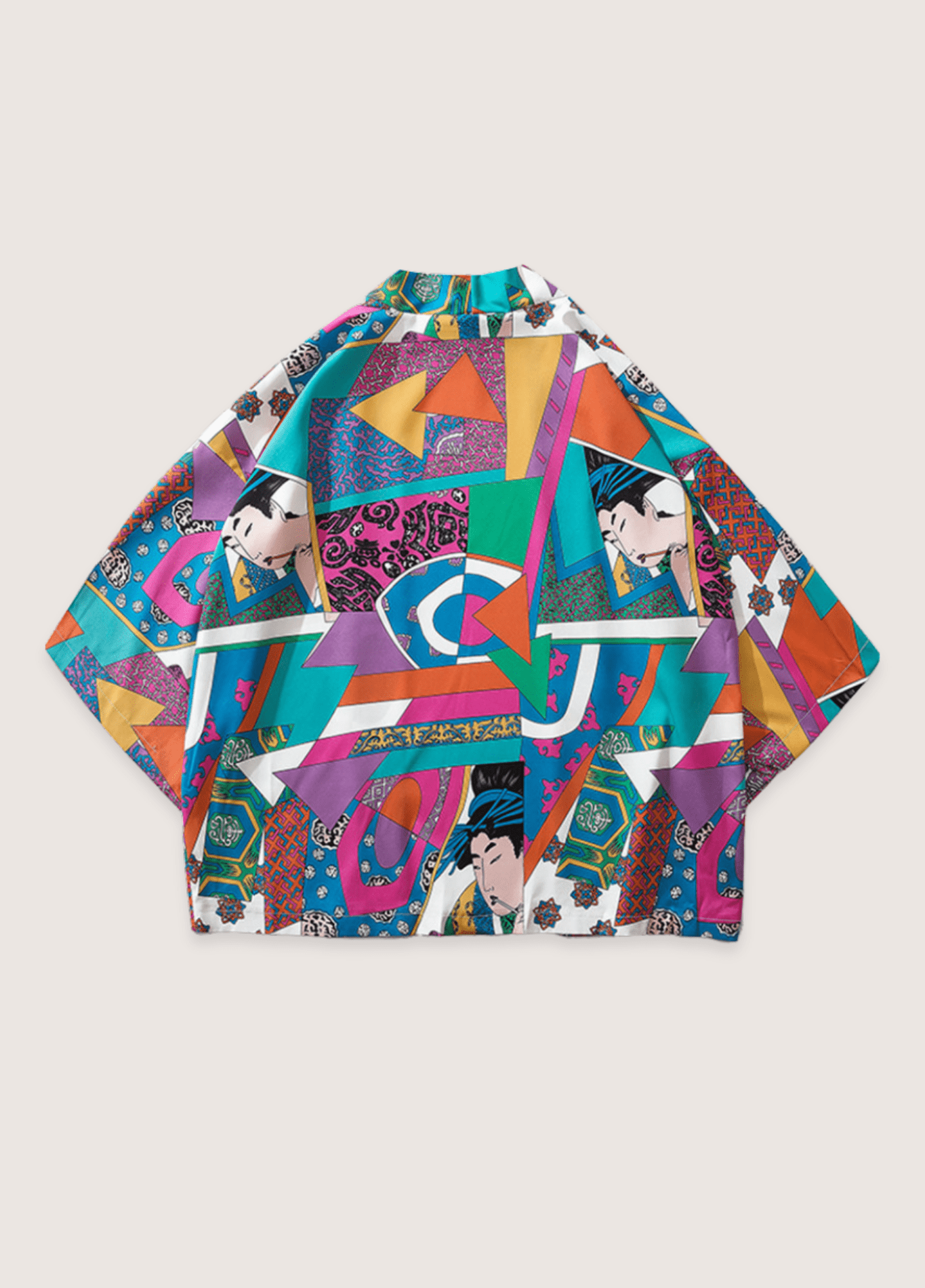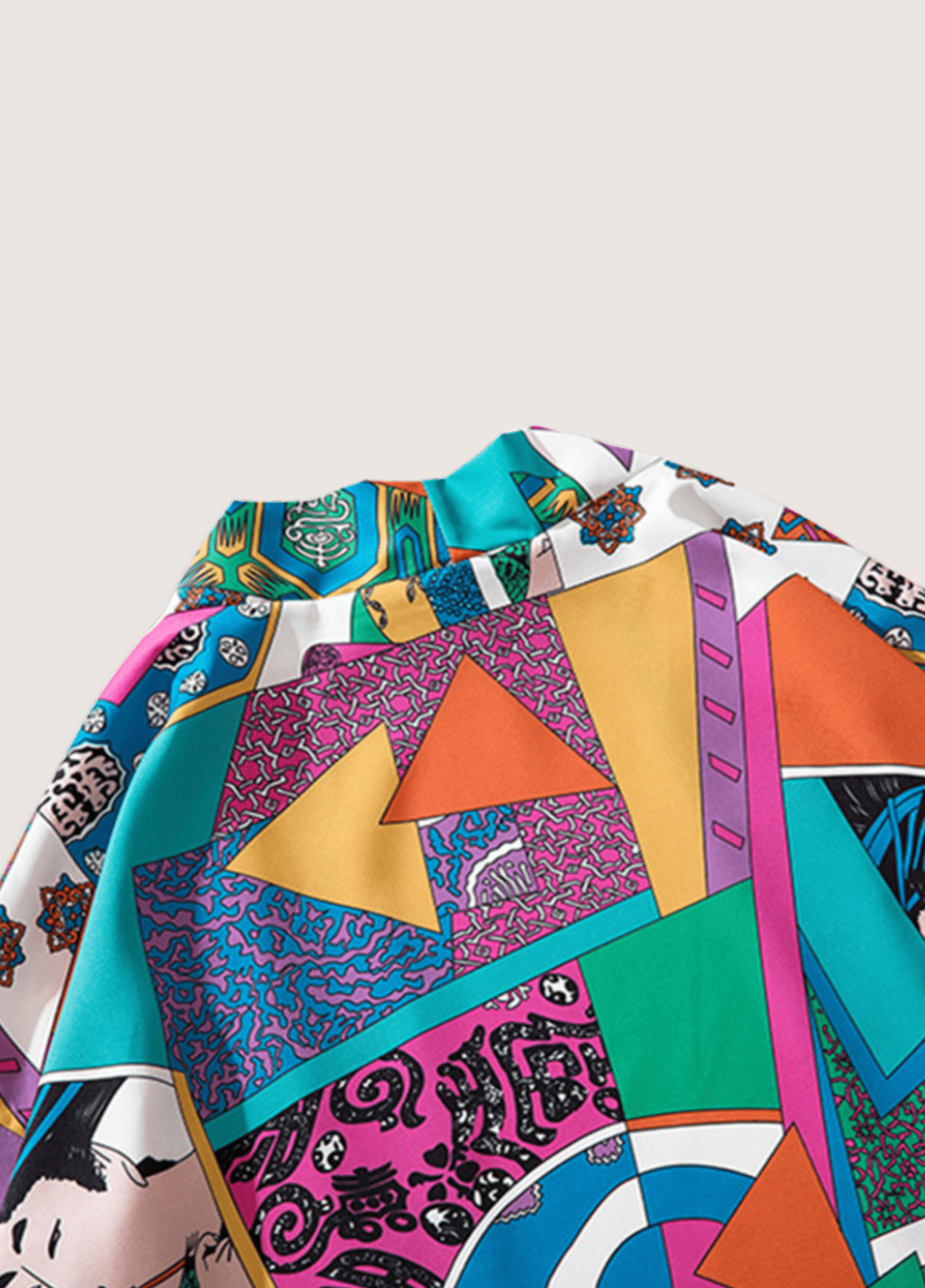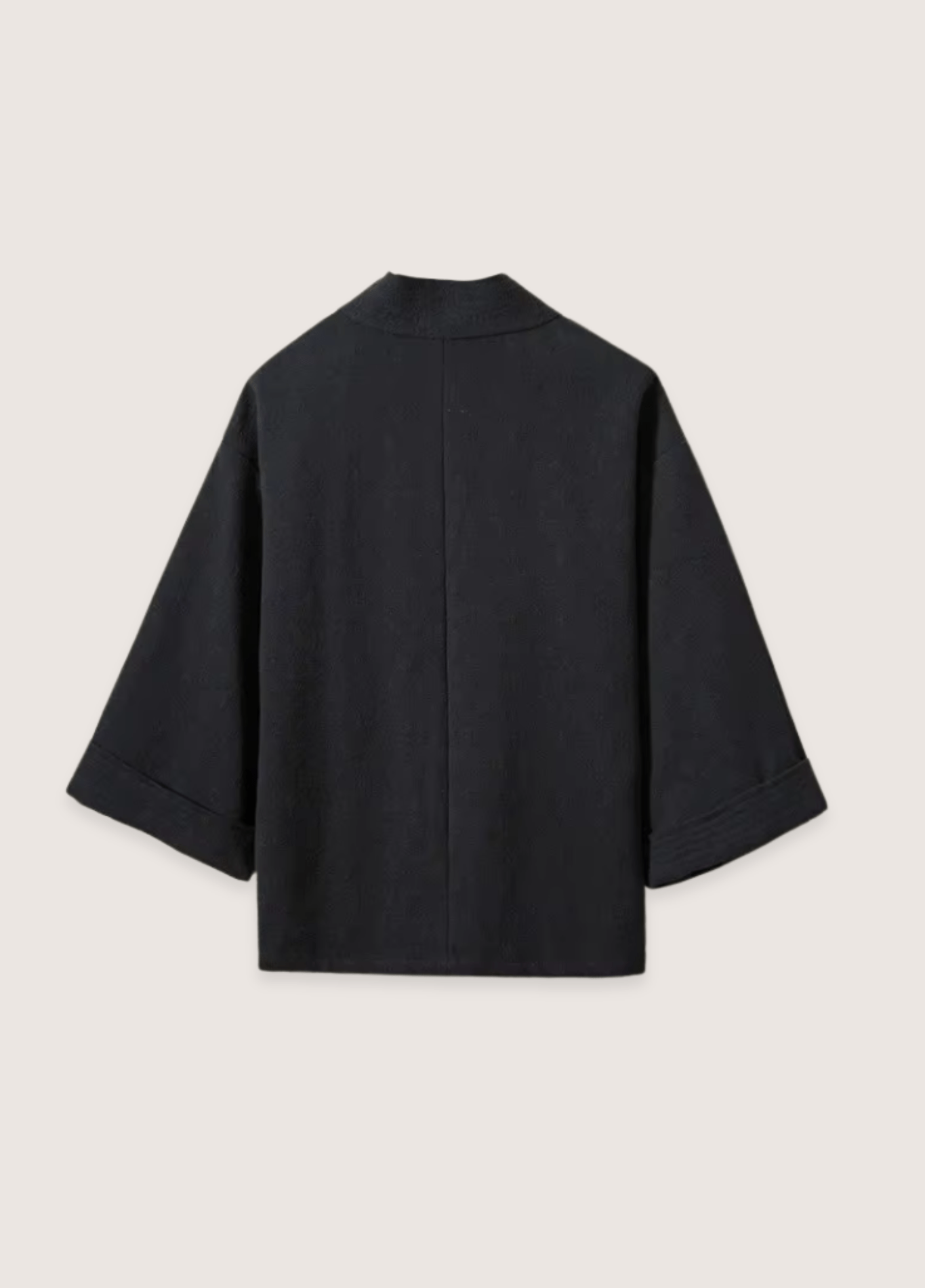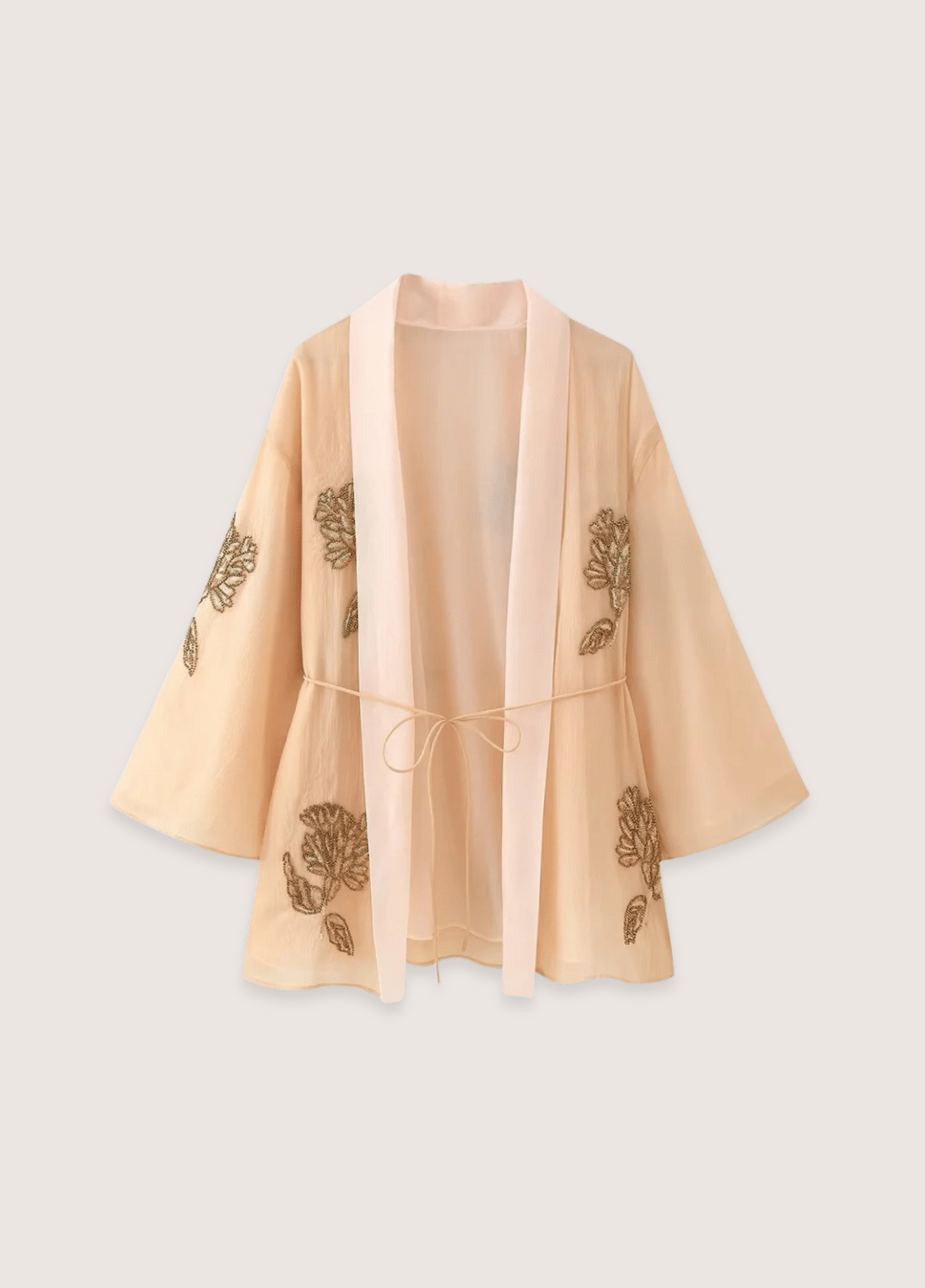Let yourself be seduced by our exceptional kimonos, where the ancient heritage of Japan meets the effervescence of contemporary fashion. Our varied collection reinvents traditional dress codes to create unique pieces that stand the test of time. From the kimono jacket to the kimono dress, a wide selection of this historic garment is available in our store.
The influence of the kimono on Western fashion: a timeless legacy
The history of the kimono's influence on Western fashion dates back to the 17th century, when traders fromThe Dutch East India Company brought the first quilted kimonos to Holland. These exotic clothes, called "Japanese rock", quickly became popular as indoor wear for men, appreciated for their lightness and warmth. Their popularity was such that they appeared in many portraits of the period and inspired copies in neighboring countries.
The wave of Japonism: when the East fascinates the West
The second half of the 19th century saw the birth of a real passion for Japanese culture in Europe and the United States, a movement known as the "Japonism". If the influence of Japanese art, especially theukiyo-e, on Impressionist painters is well documented, the impact of the kimono on fashion was equally significant. Western women first fell in love with these exotic garments, adopting them as elegant indoor wear. This initial appropriation ledParisian and London designers have started using kimono fabrics for their own designs, while textile manufacturers in Lyon began producing silks inspired by Japanese patterns, marking the official debut of Japanese style on the Parisian fashion scene.
The Parisian transformation: a revolution in fashion
Around 1910, a real revolution took place in Parisian fashion. Coats and dresses with silhouettes inspired byuchikake(ceremonial kimonos) appeared. The style "nukiemon neckline", lowering the back hem to expose the nape of the neck, became popular, accompanied by long sleeves and details reminiscent ofobiornate. Visionary designers like Madeleine Vionnet and Paul Poiret took inspiration from the kimono's straight-cut technique, revolutionizing 1920s fashion with cylindrical designs that featured straight lines joining rectangular pieces together.
A revolution in clothing design
This influence marked a turning point in traditional European clothing design, which had been based on the ideals of volume and three-dimensionality. Designers began to move away from forms that were strictly adapted to the human body to explore freer possibilities. This period fundamentally transformed the structure and shape of clothing, as designers freed themselves from the traditional constraints of silhouette to embrace a wider range of shapes. This new methodology transcended the superficial appeal of the exotic to impact fashion as a whole.
The influence on contemporary creation
The impact of the kimono on contemporary fashion remains significant. Designers likeAlexander McQueen, Yves Saint-Laurent and Cristóbal Balenciaga have all explored the creative possibilities offered by the Japanese kimono.. More recently, Maison Margiela, under the direction of John Galliano, created a men's coat for its spring/summer 2018 collection based on aobiold. Tom Brown, for his spring/summer 2016 collection, particularly shone by incorporating kimono-inspired designs into understated business suits, creating a unique pop contemporary style. Christian Louboutin took inspiration from a late-period kimono textileEdofor its fall/winter 2017 collection, creating boots adorned with traditional motifs of bamboo, plum blossoms and cranes.
The renaissance of the kimono in modern fashion
The exhibition “Kimono Refashioned” examined this diverse relationship between the kimono and Western fashion, from the second half of the 19th century to the present. Opening at the Newark Museum in October 2018, and traveling to the Asian Art Museum of San Francisco in February 2019 and the Cincinnati Museum in June 2019, the exhibition was a collaborative effort between the Kyoto Costume Institute and three American museums. It not only explored the influence of the kimono on Western fashion, but also showcased the work of Japanese designers who have inherited this cultural legacy.
This enduring influence of the kimono on Western fashion demonstrates its unique ability to transcend cultural and temporal boundaries, continuing to inspire designers in their quest for new forms of sartorial expression. From its initial adaptation as a piece of indoor clothing to the bold reinterpretations of contemporary designers,The kimono continues to fascinate and influence international fashion, proving that its impact goes far beyond a passing trend.
The Evolution of the Status of the Kimono in Japan: From Everyday to Symbol
The kimono has undergone a significant transformation in its status in Japan. During the periodEdo(1630-1868), it was above all a powerful social marker. Samurai women led a strictly regulated life, including precise dress codes that varied according to the season, events and time of day. Like the Western nobility, they owned richly embroidered and printed kimonos for every occasion.
The emergence of Japanese urban fashion
Ironically, it was not the samurai class that pioneered kimono innovations, but rather the emerging merchant class. Unable to improve their social status due to the strict hierarchy of society, these merchants expressed their wealth and confidence through their clothing. The actors ofkabukiand courtesans became the true influencers of their time, their stylistic innovations being disseminated to the public through inexpensive woodblock prints.
The transformation of the kimono after the eraMeiji
After the United States forced Japan's borders to open in the late 19th century, the kimono began to take on a more symbolic role. This change was particularly pronounced during theMeiji(1868-1912), a period of intense modernization. Although the emperor and his court initially adopted Western dress, the 1890s saw a revival of the kimono, driven by growing nationalist sentiment. Japan, while seeking to assert itself as an equal to the West, wished to highlight its unique cultural heritage.
The Kimono in Postwar Japan
The real break in the daily wearing of the kimono came after the Pacific War (1941-1945). In a country devastated morally and physically, the Japanese turned to more practical Western clothing. As Sheila Cliffe, a professor at Jumonji Gakuen University, explains, this period marked a break in the traditional transmission of kimono know-how from mother to daughter. Kimono companies responded by establishing apprenticeship schools, but this had the effect of formalizing and rigidifying the rules for wearing kimono.
The contemporary renaissance
Since the 1990s, there has been a renewed interest in the kimono, particularly among the younger generations of Japanese people. Thisrenewal began with the wearing of theyukata(casual summer kimono) at summer festivals, worn casuallywith modern platform sandals, breaking free from strict traditional rules. This movement has grown with the emergence of social networks and specialized magazines, allowing kimono lovers to share their passion and personal styles.
The kimono today: between tradition and modernity
Today, the kimono enjoys a greater presence in the fashion world than ever before. Events like “Kimono Jack,” where enthusiasts gather in public spaces, are evidence of this renaissance. Social media, especially Facebook, allows kimono enthusiasts around the world to connect and share their enthusiasm. Personalities like Kumiko Ishioka exemplify this new approach to the kimono, wearing them for theater outings as well as social gatherings with friends, demonstrating that the kimono can be both a traditional garment and a contemporary fashion piece.
This evolution of the kimono's status from everyday garment to cultural symbol and back to living fashion piece illustrates the garment's remarkable ability to adapt and reinvent itself while retaining its unique cultural essence.
Contemporary heritage: the kimono still inspires designers
This enduring influence of the kimono on Western fashion is a testament to its unique ability to transcend cultural and temporal boundaries, continuing to inspire contemporary designers in their quest for new forms of sartorial expression.
The essence of the kimono throughout the seasons
Trends evolve, seasons pass, but the elegance of the kimono remains. In spring,Our linen kimonos and our light lace models are adorned with delicate floral patterns, evoking the fleeting beauty of cherry blossoms. The bohemian prints and rosy hues of our spring collection infuse every outfit with a natural softness.Summer reveals our beach kimonoswith airy materials and our short models in bright shades, perfect for summer evenings.Our summer collection is distinguished by its silk kimonoswith exotic patterns and its lightweight models decorated with subtle sequins.
Fall welcomes our quilted kimono jackets with rich texturesand enveloping, available ina palette of earthy colors dominated by khaki and beige tones.Satin kimonos and our revisited traditional modelsbring a touch of refinement to autumn days.Winter reveals the fullness of our lined kimono coats and our long modelswith precious finishes, where detailed embroidery meets noble materials. Our collection ofBlack and white kimonos offer timeless elegance, while our golden models brighten up winter evenings.
The art of kimono reinvented
In today's fashion world, the kimono transcends its original status to become a key piece of the female wardrobe.During the day, it becomes an elegant cardiganlayered over a minimalist outfit. In the evening, tied with a worked belt, it transforms into a wraparound dress. This perpetual metamorphosis illustrates the exceptional versatility of this ancestral garment reinvented for the modern woman.
A wardrobe with endless possibilities
Our collection explores all facets of the contemporary kimono.Cuts vary from the short kimono, perfect for an urban styledynamic, to the long kimono that brings a touch of majesty to each appearance. The materials are available according to your desires and the occasions: precious silk for important events, luminous satin for evenings, romantic lace for a bohemian look, light fabrics for the summer season. The diversity of textures and drapes allows you to create a complete wardrobe around this iconic piece.
Everyday elegance reinvented
The women's kimono redefines the art of dressing on a daily basis. For a day at the office, it brings a touch of controlled originality to a classic suit. On the weekend, it transforms a simple pair of jeans and a t-shirt into a remarkable outfit. For an impromptu evening, it becomes the centerpiece that enhances a simple dress. This natural adaptability makes it a relevant fashion investment, capable of lasting over the years without losing its charm.
A collection for every woman, a style for every moment
From the delicacy of the silk kimono to the bohemian charm of our lace models, our collection celebrates diversity. The plus size kimono adapts elegantly to all body types, while the short kimono offers a dynamic look perfect for the city. For special occasions,Our line of chic kimonos comes in sequined models and gold versionsthat light up your evenings. The wedding kimono, in its immaculate splendor, transforms precious moments into unforgettable memories.
Between tradition and modernity
The heritage of the traditional kimono is gracefully expressed inour collection of authentic Japanese kimonos. For a more contemporary style, our kimono sets harmoniously combine matching tops and pants.The kimono cardigan offers a modern interpretation of the ancestral garment, while our line ofVintage kimonos revive the charm of the eraspast. For the more daring, theSexy kimono and the kimono nightie delicately reinvent the art of seduction.
How to choose a kimono
From neutral tones to vibrant colours, our collection covers the entire spectrum of sartorial emotions. The timeless black kimono rubs shoulders with the white kimono in a dance of pure elegance.The pink kimono brings a touch of softness, while the green kimono evokes natural freshness.. Fans of ethnic style will love ourkhaki kimono with revisited military accents, while the beige kimono offers a chic neutralitywhich crosses the seasons.
From day to night, from the beach to the city
The light and bright beach kimono accompanies your summer getaways with style. For festive evenings, the sequined kimono attracts all eyes.The night kimono and the kimono bathrobe reinvent the art of domestic comfortwith a touch of refined exoticism. Our collection extends to sportswear with the judo kimono, combining functionality and traditional aesthetics.
Sets designed for your style
Our coordinated women's sets revolutionize the concept of the total look. The kimono trouser set offers a modern and assertive silhouette, while the long kimono and trouser set creates a majestic look for special occasions. For the more delicate, the kimono nightie set reinvents the art of the chic negligee.
For the whole family
Our passion for the kimono extends to all generations. The girl's kimono and the baby kimono transmit Japanese elegance to the youngest, in adapted and charming versions. The geisha kimono, faithful to tradition, rubs shoulders with the more casual kimono vest in our varied collection.
The women's kimono: a fashion that defies time
Beyond the ephemeral trends that govern the world of fashion,The women's kimono stands out as an exceptional piece that has stood the test of timewith grace. This timelessness is expressed in the purity of its lines, inherited from centuries of sartorial refinement. From the traditional kimono to the contemporary cardigan kimono, each piece retains this unique essence that transcends passing fashions. Classic patterns, reinterpreted with modernity, allow you to create outfits that never go out of style. A sober black kimono goes just as well with yesterday's basics as with today's trendy pieces, while a silk kimono with delicate prints remains eternally elegant. This permanence in style makes the kimono a relevant fashion investment, a piece that is passed down from generation to generation, carrying within it the history of fashion and the promise of a style that is always current.
The Kimono Across Cultures and How the Garment Has Adapted into Western Fashion
The adaptation of the kimono in Western fashion perfectly illustrates the harmonious encounter between two worlds. What was once a Japanese ceremonial outfit has been transformed into a versatile fashion piece, adopted by the most prestigious fashion houses. Our collections reflect this fascinating evolution:the kimono cardigan reinvents the codes of the traditional blazer, while our quilted kimono jacket revisits the classics of the Western wardrobe. This cultural fusion is also evident inour bohemian kimonos, where traditional Japanese patterns blend with modern ethnic influences.
The influence of the kimono on Western fashion goes beyond simple stylistic borrowing. The characteristic loose cuts have inspired new silhouettes in contemporary fashion. For example, our collection of long kimonos naturally dialogues with Western evening dresses, while our kimono trouser sets create an elegant bridge between the sartorial traditions of East and West. This cultural adaptation is even reflected in our most casual pieces, such as the linen kimono or the beach kimono, which retain the essence of traditional clothing while meeting the demands of the modern lifestyle.
How Models Wear Kimono Today
Contemporary models have propelled the kimono to the status of a fashion essential, creating bold combinations that reinvent this age-old garment. On social networks, fashion models reveal a thousand and one ways to wear our different collections. The short kimono is worn with jeans and ankle boots for an urban look, while the silk kimono is draped over a minimalist dress for a casual look.
Content creators also reveal the astonishing versatility of our pieces. Our kimono becomes the star of trendy evenings, the lace kimono is invited into the most artistic photo shoots, and the vintage kimono is causing a sensation in styling videos. The most daring do not hesitate to divert the night kimono into a day piece, or to transform the satin kimono into an elegant overcoat. This modern reappropriation of the kimono by the models inspires new ways of wearing our collections every day, from the most classic black kimono to the most avant-garde models, proving that traditional Japanese style has definitely found its place in the wardrobe of today's trendy women.
Dive into our collections ofkimono jacketand ofkimono dress


